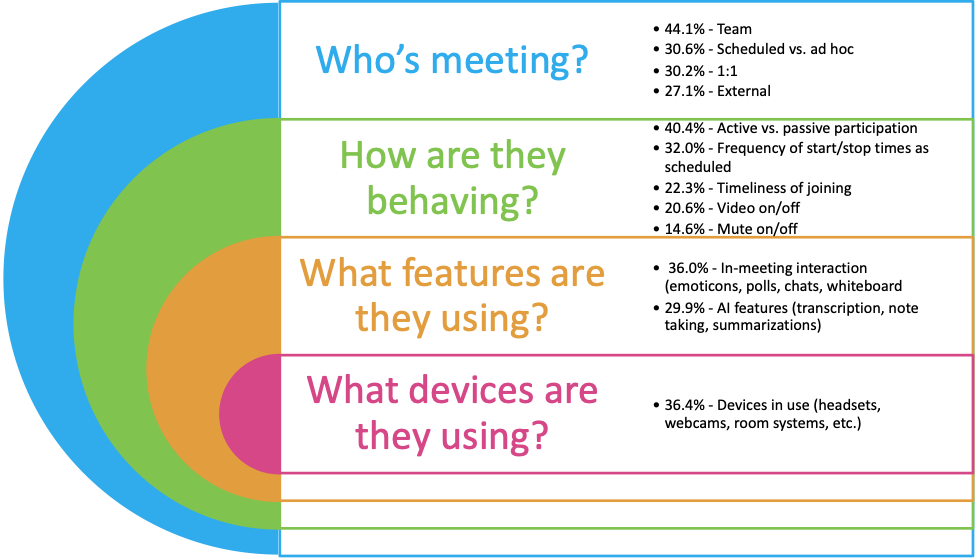Hold on to your hats. Just when we’ve all gotten comfortable with our communications and collaboration apps, they’re poised for significant change. One change agent? Generative AI, of course.
As my colleague Irwin Lazar, president and principal analyst for workplace collaboration technologies, points out in a recent Metrigy webinar on emerging collaboration apps, “The way that we communicate and collaborate with applications is going to not resemble anything a year or two years from now what it is today” because of generative AI.
Generative AI is too radically transformative to ignore, and few vendors have. We’ve seen generative AI announcements this year from just about every provider of communications and collaboration apps, from Cisco to Dialpad, Microsoft, RingCentral, Slack, Zoom… to name a few. We’ve seen the table stakes, like generative AI-powered transcription, translation, and summarization for meetings, and we’re getting a glimpse of the increasing sophistication that’s coming.
Toward the latter point, for example, last month at WebexOne Cisco showed how advanced technology could adapt to a participant’s in-meeting behavior. The participant gets up and walks away from their desk, and the meeting auto-mutes and turns off the camera. When the participant returns, they’d receive a generative AI-created summary of missed talking points, plus the ability to ask questions on what was missed.
Despite all the vendor activity, no enterprise organization should be rushing headlong into the use of generative AI at this point, however. Vendors have some rough edges to polish, such as accuracy of their generative AI translation, transcription, and summarization engines, and trust to build around their data use and, potentially, pricing models. And companies will have their own issues to address, as well, such as whether generative AI might negatively affect company culture. Will employees be all business, all the time, during meetings if they know AI is listening in and sharing summaries? Will they lose the sense of camaraderie that binds them together and working well toward common goals?
The best advice for IT leaders at the moment is to be proactive and keep up to date on how communications and collaboration providers are bringing generative AI into their portfolios. Look to get a solid understanding of how the technology works and consider the value for employees, but do so with an eye on how to implement generative AI in a way that employees can trust and are comfortable with and that meets the corporate compliance and security requirements without crippling budget.
And, know that generative AI is but one technology changing the future of communications and collaboration. Discover others in Metrigy’s “Emerging Collaboration Apps” webinar, replay now available on demand.
The collaboration application landscape is rapidly changing. Generative AI offers the potential to improve productivity and streamline employee engagement. New apps are quickly arriving that aim to bridge the home and office employee divide. And, employee experience platforms offer new ways to share information and establish employee relationships no matter the location. In this webinar we’ll share the top five emerging collaboration applications and what IT and business leaders need to do to ensure success.






